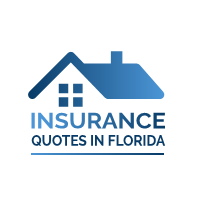Is Motorcycle Insurance Required in Florida?
Florida motorcycle laws are unique compared with most other states. In most states motorcycle insurance laws are comparable to other motor vehicle laws but in Florida they are not. Drivers of motor vehicles in Florida, with four or more wheels, are required to carry personal injury protection (PIP) as part of the Florida no fault insurance blanket. This will guarantee the payment of medical bills up to $2500 as long as the claim is filed within 14 days. If the medical bills resulted from an emergency, as certified by a medical professional, the PIP will pay the full threshold of $10,000. This PIP is not available to the motorcycle owner even if the owner already carries PIP for another vehicle. Given the fact that injuries in a motorcycle crash are likely to be more severe, the motorcycle rider is at greater risk of financial disaster following a serious crash.
MOTORCYCLE REGISTRATION FLORIDA
Florida motorcycle insurance requirements are based upon the financial responsibility of the owner against liability. The motorcycle owner is not required to carry insurance to register a motorcycle. However, the driver is held financially responsible if charged in a motorcycle crash. A motorcycle owner has three financial responsibility options to choose from.
- Purchase liability insurance for a licensed Florida insurance carrier. This would be the most common way of gaining coverage.
- Secure a Financial Responsibility Certificate. This requires posting a surety bond with a state licensed company and depositing cash or securities with the Department of Highway Safety and Motor Vehicles (DHSMV)
- Obtain a Self-Insurance Certificate from the Bureau of Financial Responsibility after providing evidence of a net encumbered capital.
MOTORCYCLE INSURANCE FLORIDA
In Florida, when would you be required to have bodily injury liability insurance?
The states minimum liability coverage requirements for other passenger vehicles are guidelines that can be used to determine the amount of coverage needed.
- $10,000 for one person bodily injury
- $20,000 for two or more people bodily injury
- $10,000 per crash in property damage liability.
WHAT IS NO-FAULT COVERAGE?
Florida is a “no fault” state requiring personal injury protection coverage for your personal vehicle of four wheels or more. No-fault coverage ensures that all medical bills will be paid regardless of who was at fault in an accident. No-fault laws do not apply to motorcycles. This means that any motorcycle driver must pursue compensation from the other drivers insurance for medical bills, lost income, pain and suffering and damage to the motorcycle. They are not required to meet any threshold or prove the severity of injuries as are drivers of other personal vehicles. It is potentially beneficial for a motorcycle owner to obtain uninsured motorist coverage (UMC) in the case of a collision with a driver who does not carry liability insurance. The number of uninsured motorists in Florida is the second highest in the nation at 24%. That is just below 1 in 4 drivers on Florida roads without liability insurance.
WHAT ARE THE PENALTIES FOR NOT HAVING MOTORCYCLE INSURANCE IN FLORIDA?
Although motorcycle insurance is not required to register a bike in Florida, there are penalties if you are involved in an accident and do not have insurance. If you were charged with an accident, you are financially responsible for the bodily injuries and property damage. If no liability coverage was in effect at the time of the accident you could face serious ramifications including:
- Having your driving privileges suspended
- Having your registration and tag suspended
- Being required to purchase bodily injury/property damage liability coverage for three years
- Having civil judgments against you
In other words, motorcycle coverage is not mandatory until after you have caused an accident.
Call for a free consultation today at (877) 408-9497
